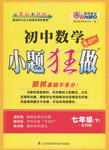Directions: Complete the following passage by using
the words in the box. Each word can only be used once. Note that there is one
word more than you need.
A. contact B.
include C. announced D.
public E. especially
F. growing G. leader H.
range I. available J. separately
Knowledge is free on the Internet at a small but __1.___
number of colleges and universities.
About 160 schools around the world now put free course
materials on the web to the ___2.___. Recent additions in the United States ___3.___
projects at Yale, Johns Hopkins and the University of California,
Berkeley.
Berkeley said it would offer videos of lectures on
YouTube. Free videos from other schools are ___4.___ at the Apple iTunes store.
The Massachusetts Institute of Technology (M.I.T.)
became an early ___5.___with its Open Course Ware project, first ___6.___ in
2001. Free lecture notes, exams and other resources are published at
ocw.mit.edu. Many exams even include the answers.
Today, Open Course Ware offers materials from 1,800
undergraduate and graduate courses. These ___7.___ from physics to
political science.
Visitors can learn the same things that M.I.T.
students learn. But as the site points out, Open Course Ware is not a M.I.T.
education. Visitors receive no credit toward a degree. Some materials from a
course may not be available, and the site does not provide ___8.___ with
teachers.
Still, M.I.T. says that the site has had forty million
visits by thirty-one million visitors from almost every country. Sixty percent
of the visitors are from outside the United States and Canada.
Students and educators use the site, including
students at M.I.T. But the largest number of visitors, about half, are
self-learners.
Some professors have become well-known around the
world as a result of appearing online. Walter Lewin, a physics professor at
M.I.T., is ___9.___ popular. Fans enjoy his entertaining lectures.
M.I.T. Open Course Ware now includes materials for
high school. The aim is to improve education in science, technology, maths and
engineering.

 小题狂做系列答案
小题狂做系列答案
 小题狂做系列答案
小题狂做系列答案